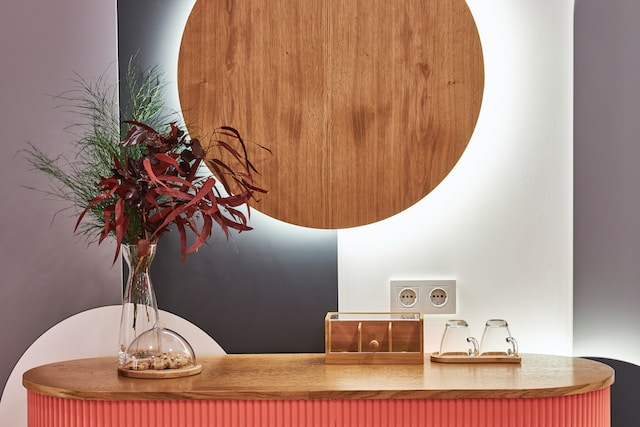
When it comes to creating a cozy and aesthetically pleasing environment in your home, the combination of colors and materials plays a crucial role. Among all the available options, the fusion of color and wood stands out as a timeless and elegant choice.
Wood brings with it a sense of naturalness and warmth, while colors can express personality and style. The art lies in balancing these two elements to create a space that reflects your unique vision.
+ Transforming the Powder Room: 12 Tips for Creating a Sophisticated and Luxurious Ambience
+ The Line, a futuristic and sustainable city envisioned by Saudi Arabia in the desert, is already under construction. Watch the video!
Let’s explore some essential tips for harmoniously combining color and wood in decoration.
Start with a neutral base:
Before introducing vivid colors, it’s recommended to start with a neutral base. Natural wood tones, such as light oak or walnut, serve as a blank canvas for your color palette. This neutral base allows you to experiment with different combinations without overwhelming the space.
Choose a coherent color palette:
Selecting a cohesive color palette is crucial. Opt for a palette that complements the wood tone. Soft and natural colors like olive green, navy blue, and gray often work well with wood, creating a sense of balance and tranquility.
Contrast with vibrant color:
If you want to add a touch of vibrancy to the space, consider introducing vibrant colors as decorative details. Wood serves as a solid base for mustard yellow, burnt orange, or turquoise. This creates an interesting contrast, highlighting both the wood and the chosen colors.
Use analogous tones:
A subtle and sophisticated approach is to choose colors analogous to the wood tone. For example, if you have dark oak furniture, opt for colors close to it on the spectrum, such as reddish-brown and beige. This approach creates a sense of fluidity and visual harmony.
Blend textures:
Combining wood and colors isn’t limited to the color palette alone. Texture also plays a vital role. Mixing different textures, like rustic wood and soft fabrics, can add depth and dimension to the space. Think of plush rugs, velvet cushions, or lightweight curtains.
Balance and proportion:
Balance and proportion are key aspects when combining color and wood. Avoid overwhelming the space with a dominant color that might compete with the natural beauty of the wood. Instead, distribute them in a balanced manner, allowing the wood to shine while the colors complement.
Experiment with small details:
If you’re cautious about drastic changes, start by adding small colorful details around your wooden furniture. Colorful cushions, decorative objects, or artworks can introduce colors without being overwhelming.
Ultimately, the combination of colors and wood is a way to express your individuality and create an environment that makes you feel at home.
By following these tips and trusting your personal taste, you’re on the right path to creating a beautiful, balanced, and inviting space that reflects your unique aesthetic. Remember, the key lies in the harmony between the warmth of wood and the liveliness of colors!
Stay updated with news through our Facebook page!

